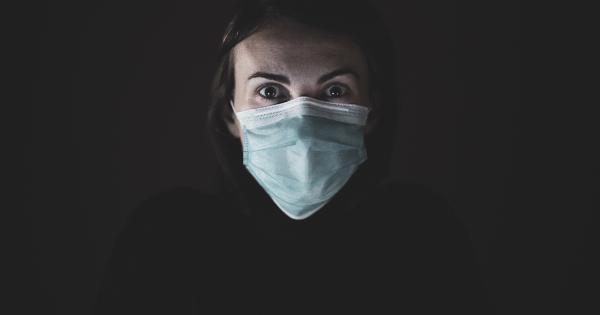Every year, millions of lives are lost to a condition that often goes unnoticed and untreated. This silent killer takes the lives of around 3 million people worldwide, making it a significant global health issue.
Although it may not receive as much attention as diseases such as cancer or heart disease, the impact of this condition cannot be underestimated. In this article, we will delve deeper into this condition, its causes, symptoms, and potential solutions.
What is the Silent Killer?
The silent killer we are referring to is chronic obstructive pulmonary disease (COPD). COPD is a progressive lung disease characterized by obstructed airflow, making it increasingly difficult for a person to breathe.
It includes conditions such as chronic bronchitis and emphysema. COPD often develops due to long-term exposure to irritating gases or particles, most commonly from cigarette smoke.
The Global Burden of COPD
COPD affects people of all ages and backgrounds, but it is most prevalent among older adults who have a history of smoking. However, non-smokers can also develop COPD due to exposure to environmental pollutants or certain genetic factors.
According to the World Health Organization (WHO), COPD is responsible for approximately 3 million deaths annually, making it the third leading cause of death worldwide.
COPD not only poses a significant threat to public health but also places a substantial burden on healthcare systems globally.
The condition requires long-term management, including regular visits to healthcare providers, medication, and sometimes even oxygen therapy. In addition, COPD exacerbations can lead to emergency room visits and hospitalizations, further straining healthcare resources.
Recognizing the Symptoms
One of the challenges with COPD is that it often goes undiagnosed until its later stages. People often dismiss symptoms such as chronic cough, shortness of breath, and wheezing as mere signs of aging or lack of fitness.
However, early identification and intervention can significantly improve outcomes and slow the progression of the disease.
It is essential to raise awareness about the symptoms of COPD so that individuals at risk can seek appropriate medical help. Some common symptoms of COPD include:.
- Chronic cough
- Shortness of breath, especially during physical activity
- Wheezing
- Chest tightness
- Frequent respiratory infections
- Lack of energy
- Unintentional weight loss
- Swelling in the ankles, feet, or legs
Causes and Risk Factors
Smoking is undeniably the leading cause of COPD. Approximately 85-90% of all COPD cases are directly linked to smoking or long-term exposure to secondhand smoke.
The harmful chemicals present in tobacco smoke can cause inflammation and damage to the airways and lungs, leading to the development of COPD over time.
However, while smoking is the primary risk factor, it is not the only one. Several other factors can contribute to the development of COPD, including:.
- Exposure to occupational hazards such as chemicals, dust, or fumes
- Indoor and outdoor air pollution
- Frequent respiratory infections during childhood
- Genetic factors
- Asthma
Prevention and Management
Although there is currently no cure for COPD, there are measures individuals can take to prevent its onset or slow its progression. The most effective prevention strategy is to avoid smoking and exposure to secondhand smoke.
Quitting smoking can be challenging, but it is never too late to quit. There are various support systems available, including medications, counseling, and support groups, to assist individuals in their journey toward quitting smoking.
In addition to smoking cessation, the following preventive measures can significantly reduce the risk of developing COPD:.
- Avoidance of occupational hazards
- Minimizing exposure to harmful pollutants and indoor air pollution
- Maintaining good respiratory hygiene
- Receiving appropriate vaccinations, such as flu and pneumonia vaccines
For individuals already diagnosed with COPD, proper disease management is crucial to improve their quality of life and slow the progression of the disease. This involves:.
- Adhering to prescribed medication regimens
- Engaging in pulmonary rehabilitation programs
- Participating in regular physical activity tailored to individual capabilities
- Ensuring a well-balanced and nutritious diet
- Monitoring and managing symptoms effectively
- Regularly attending medical check-ups and following healthcare provider recommendations
The Role of Early Detection
Early detection and diagnosis of COPD are essential to ensure timely intervention and appropriate management. Healthcare providers play a critical role in identifying individuals at risk and conducting diagnostic tests that measure lung function.
These tests include spirometry, which assesses how well the lungs are functioning, and imaging tests, such as chest X-rays or computed tomography (CT) scans.
Efforts should be made to increase awareness among both healthcare professionals and the general population about the importance of early detection.
This can lead to timely interventions and help preserve lung function, improve the quality of life, and potentially reduce the number of COPD-related deaths.
Promising Research and Innovations
Researchers and scientists worldwide are dedicated to finding new approaches to manage, treat, and potentially cure COPD.
Numerous studies are underway to explore innovative therapies, improve current treatment options, and uncover potential biomarkers that can facilitate early detection.
One area of focus is regenerative medicine. Researchers are studying the regrowth and repair of damaged lung tissues using stem cells or other regenerative approaches.
While these treatments are still in experimental stages, they hold promise for future COPD management and potential cure.
Another area of research involves the development of personalized treatment plans based on an individual’s genetic makeup.
By understanding the genetic factors that contribute to COPD susceptibility or progression, healthcare providers can tailor specific interventions and medications to meet the unique needs of each patient.
Raising Awareness and Taking Action
Despite being a major global health issue, COPD often remains in the shadows compared to other high-profile diseases.
Increased awareness and understanding of COPD are crucial to ensure that individuals at risk seek medical attention and adopt preventive measures. Moreover, health policies need to prioritize COPD prevention, early detection, and adequate treatment to reduce the burden on healthcare systems and improve outcomes for patients.
By shedding light on COPD and its impact on millions of lives, we can work towards a future where this silent killer is no longer a leading cause of death worldwide.





























